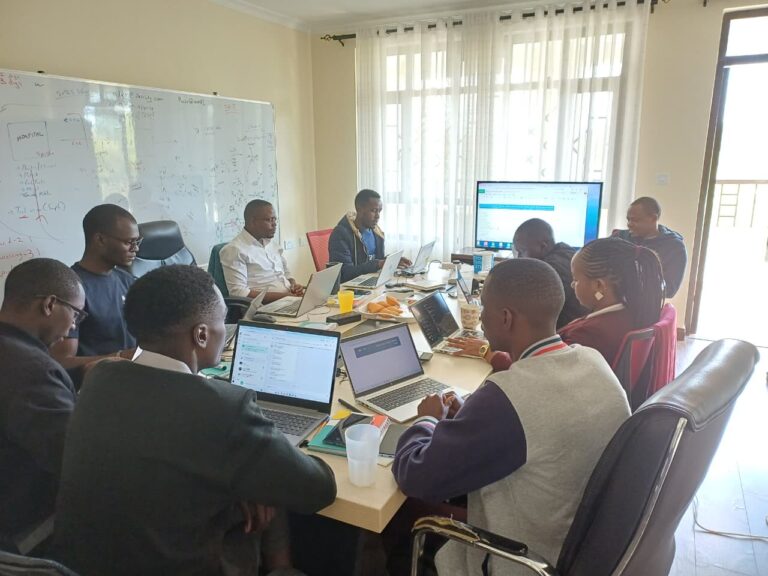
Remembering Professor Farzana Rana
Over the course of her long and illustrious career, the late Prof. Farzana Rana touched the lives of countless pathologists and doctors. Twelve years after her passing, her former students and colleagues shared their memories of this remarkable educator.
Dr Timothy Onyuma:
I met Prof. Farzana during my undergraduate studies between 2002 and 2003, and later during my Master’s between 2008 and 2012. She was my teacher, mentor, and a motherly figure. She made me get into the speciality of pathology. She was very cordial, very keen on her students, tough, strict, but also friendly. She was always looking out for her students.
She hugely supported my learning. We would interact with her on a day-to-day basis. She was beneficial when pointing out areas of improvement. She also supervised my thesis project and advised me on how to approach each level. She kept tabs on her students every day.
What I learned from her the most about clinical expertise was that the more you learn, the more you advance, and the more you realise there’s a lot you don’t know. Learning is an everyday process. Despite having a lot of qualifications and publications, learning doesn’t stop.
She was a very dedicated and passionate teacher. I remember even when she got breast cancer, she never stopped teaching. Despite undergoing chemotherapy, she’d actually ring us, her students, and teach by the bedside.
Dr Muthoni Kirimi:
I met Prof. Rana as a second-year undergraduate medical student in 2000. She was very passionate about pathology, and you could tell from her teaching style, her fierce protection of the departmental teaching material and stern correction.
I met her again as a postgraduate student at the Aga Khan University Hospital. Here she mentored me for four years, from 2006 to 2009.
From her, I learnt not only pathology but also how to interact with technical staff in the laboratory and doctors in the other disciplines.
I remember one time she gave me a histopathology slide of a patient with Kaposi’s sarcoma in the stomach, and I completely missed the diagnosis. I got a thorough tongue-lashing. Being the great teacher she was, she realised my shortcomings and she would keep all subsequent cases of Kaposi’s sarcoma that came her way and share them with me until I became a guru at Kaposi’s sarcoma diagnosis.
Whenever Prof. Rana had an interesting postmortem case, she made sure her students were aware and participated. Her good standing with both government and private pathologists got us entry to both public and private mortuaries, where we participated in many postmortems and garnered a wealth of knowledge. Some days, she would actually ask us to accompany her in her car to attend to postmortems. This could happen even on weekends or public holidays. She also encouraged us to participate in seminars and workshops, and would always offer great ideas for abstracts and presentations.
Dr. Maureen Waithaka:
The first time I encountered Prof Rana, I was in my third year of medical school. Pathology was one of the main units we studied that year, and much of the learning was hands-on. My friends and I spent a lot of time in the Pathology Museum, which held one of the foremost collections of pathology specimens in the country. These were actual organs showcasing various diseases that had been preserved in formalin inside delicate acrylic boxes.
I remember Prof. Rana, whose presence was larger than life, given her years of experience in pathology, randomly walking through the museum when we students were about. She continually impressed upon us the importance of being careful with the specimens. I later came to learn that she had played a major role in identifying, acquiring and preserving many of these specimens for our learning.
We met again when I joined the pathology residency program at the Aga Khan University Hospital in Nairobi. As one of the consultant pathologists in the department, I got to interact closely with her. I observed Prof. Rana’s knack for teaching pathology, breaking down complex microscopy to memorable key points and features.
While in medical school, Prof. Rana had come off as strict and no-nonsense. We didn’t interact much back then, and it was only during residency that I came to learn that she had a heart of gold, often hosting us residents at her house on the weekends and feeding us heartily. Her warmth, kindness, and great concern for her students were easy to see.
Her passing was a huge blow to the pathology community. Her legacy lives on in every student she taught. When I examine a slide, I often recall her sharp eye and her clear, concise way of breaking down complex cases. The knowledge she shared with me, and with so many others, is now a fundamental part of how we practice pathology today.
The specimens she meticulously preserved in that museum are a testament to her foresight and dedication to medical education. Her legacy, alive in the pathologists she helped shape and mould, is timeless.
In conclusion, Prof. Farzana Rana’s unwavering dedication to pathology education and her students’ success created a lasting impact that continues to shape medical practice today. Her legacy lives on through every diagnosis made and every lesson taught by the countless pathologists she mentored, ensuring her passion for excellence in pathology will endure for generations to come.

